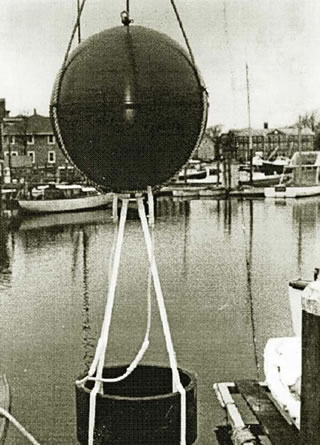On this day in history...
...in 1972, the first two SOFAR (Sound Fixing and Ranging) floats were deployed during a preliminary experiment for the Mid-Ocean Dynamics Experiment (MODE). One float was positioned at a depth of 1290 meters, and the other at 1600 meters, marking a pivotal moment in the evolution of oceanographic technology.

The development of SOFAR floats built upon earlier innovations by John Swallow, whose Swallow floats were the first devices capable of tracking deep ocean currents. However, the SOFAR floats, pioneered by Tom Rossby and Douglas Webb, introduced a major advancement: the use of the SOFAR channel, a natural layer in the ocean where sound waves travel long distances with minimal attenuation. This allowed the floats to transmit acoustic signals to distant hydrophone arrays, enabling large-scale and long-term studies of ocean currents without the need for nearby research vessels.
This deployment demonstrated the potential of SOFAR floats for quasi-Lagrangian observations of mid-ocean variability, laying the groundwork for the MODE project and transforming the field of physical oceanography. These floats provided invaluable data on deep ocean currents, mesoscale eddies, and thermocline dynamics, shaping our understanding of the ocean's interior.
The launch of these first SOFAR floats represents a milestone in the history of oceanography, combining decades of technological innovation and setting the stage for future advancements in the study of ocean circulation.
Source
- https://www.ukargo.net/about/float_history/sofar_floats/
- https://dosits.org/galleries/technology-gallery/observing-ocean-currents-and-temperature/sofar-floats/
- https://journals.ametsoc.org/view/journals/phoc/11/9/1520-0485_1981_011_1194_apeotg_2_0_co_2.xml
- https://deep-c.coaps.fsu.edu/news-and-multimedia/in-the-news/drifters-and-floats-the-past-present-and-near-future
